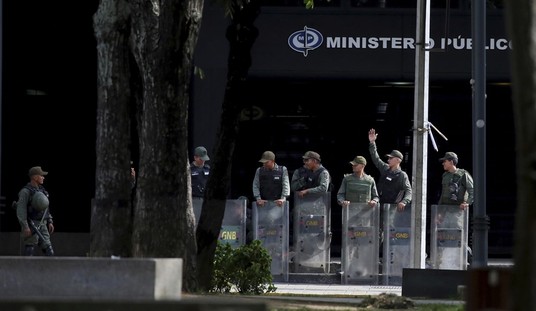At West Point last week, President Barack Obama went to a variant of an economic theme he’ll probably reprise until the day he leaves the Oval Office once and for all (we hope) 31-plus months from now.
Obama told the assembled graduating Army cadets and their families:
When I first spoke at West Point in (December) 2009 … our nation was just beginning a long climb out of the worst economic crisis since the Great Depression.
What if I told you that nearly five years into the nation’s “long climb” out of the recession, the relative size of the economy compared to its prerecession peak is not all that different from the result achieved in the same amount of time after the Great Depression of 1928-1933 officially ended? The case for this claim is surprisingly, or maybe I should say “unexpectedly,” strong.
I’m certainly not contending that the level of human suffering in 2014 is anywhere near what it was during the 1930s. That said, readers should know, if they don’t already, that the press has been mostly ignoring significant increases in homelessness in New York City, which “has more homeless than it has in decades,” and elsewhere. Minor reductions in the number of people literally living on the streets and in shelters are being more than offset by the hordes of American individuals and families living in cheap weekly motels because they can’t even scrape together the money for a security deposit on an apartment. When the press does deign to ever so briefly open its eyes, unlike during Republican administrations, they don’t tie the situation to economic policies coming out of Washington, and certainly not to our country’s president.
I should also note that the government presented only annual economic growth statistics until 1947, but that the Depression itself and the recession of 1937-1938 officially began and ended at various times during the years involved. This necessarily required some estimation when attempting to compare that era to the current one.
Let’s start with where we are after the dismal news on May 29 that the economy contracted at an annual rate of 1.0 percent in this year’s first quarter:

The full post-recession history shows that the economy finally returned to its pre-recession peak in the second quarter of 2011, the eighth quarter after the recession’s official end. No other post-World War II economy took longer than three quarters to accomplish this.
The post-Depression economy took longer to get back to where it was in mid-1929, when the economy’s contraction and ultimate crash began — but it had crawl out of a hole that was nearly seven times deeper, at 29 percent, than the 4.3 percent hole the POR (Pelosi-Obama-Reid) economy dug in 2008 and 2009:

The best estimate is that the Depression-era economy returned to its previous peak during the first quarter of 1937, 16 quarters after the downturn ended, and was an estimated 4.3 percent larger before the 1937-1938 recession began. That’s barely less than the 4.6 percent result seen 16 quarters after the end of the most recent recession.
How do the Depression and Obama eras compare to the other post-downturn economies seen after World War II? Well, they’re in a class by themselves — a really, really horrible class:

In every other recovery, the economy was at least 10 percent larger than its pre-downturn peak 16 quarters — or fewer, in several instances when an earlier subsequent recession occurred — into their respective recoveries. In this sense, the Obama economy bears a far greater resemblance to Franklin Delano Roosevelt’s economy of the 1930s than it does any other we’ve seen since. Even given three extra quarters, the Obama economy is barely halfway towards matching what the worst other post-World War II recovery achieved.
Administration apologists will argue that the hole dug in 2008-2009 was extraordinarily deep by all but Depression-era standards. They will find taking that argument to its conclusion quite painful:

The post-Depression bounceback is as dramatic as it is because of the 29 percent contraction which preceded it. As seen previously, even that degree of expansion only got the economy back to slightly above where it was in mid-1929.
The “deep hole” argument of Obama and his defenders would dictate that the current recovery should be the second-strongest on the chart, given that the 2008-2009 contraction was the deepest post-World-War II contraction on record. Instead, after 16 quarters of “recovery,” it was the worst. Even given a three-quarter mulligan, it is barely clinging to second-last place.
If Barack Obama and his administration were genuinely dissatisfied with these results, they would change course and start doing what worked during the other eras, particularly after the 1960-1961 and 1981-1982 recessions. But it’s dreadfully obvious that they have no intention of changing their direction.
There is real danger that Obama will use his extra-constitutional executive authority to make things even worse. Obamacare continues to inflict its predicted economic damage. There’s already talk of a unilateral carbon trading scheme and other environmental mischief.
If the president’s opposition doesn’t grow a spine, and very soon, even a strong repudiation at the polls in November may not matter.









Join the conversation as a VIP Member